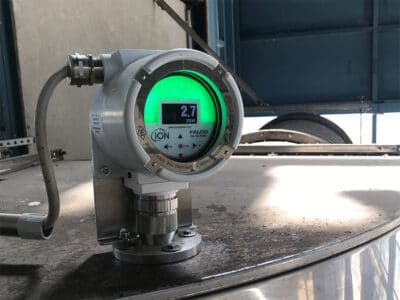
Mercury contamination detection in industrial premises
6th August 2020
Environmental pressures and subsequent legislation to control hazardous substances have seen a sharp decline in the use of mercury, although it remains an important chemical in many industrial processes and a wide range of products. This ongoing use and historic prevalence means that mercury contamination represents a significant hazard during decommissioning, demolition, repurposing or refurbishment of industrial plant, laboratories and other premises which is why mercury contamination detection is important. With the chemical being highly toxic, effective mercury contamination monitoring is essential.
Before it was realised that mercury and most of its compounds are extremely toxic, the chemical was widely used in a host of industrial and domestic products and processes – from batteries and auto switches, to CRTs and dishwashers, to HVAC equipment and lamps of all types. For many years it was an important additive in paints, cosmetics, pesticides and rubber flooring. Even today when its toxic properties are much better understood, it remains an important chemical in a host of manufacturing processes, including the production of chlorine, cement, caustic soda and sulphuric acid, and it is used or emitted in significant quantities in the likes of power generation and dental care. Properly contained and controlled, mercury can be used safely, but the real problems occur when plant and premises where mercury has been used are demolished or refurbished. Mercury contamination then becomes a very real threat to health.
Exposure to excessive levels of mercury can permanently damage or fatally injure the brain and kidneys. Elemental mercury can also be absorbed through the skin and cause allergic reactions. In terms of occupational exposure to mercury, spills of even small amounts of the element can see mercury vapour contaminating the indoor air, and there have been numerous reported cases of deaths being attributed to small spillages that were not properly cleaned up. But it is when premises that have historically made use of mercury are demolished, decommissioned, repurposed or refurbished that problems really start because mercury that has been safely contained – perhaps for decades – can be released. Ensuring that facilities are safe as they are worked upon and that there is no health risk associated with any repurposed land or with new or refurbished buildings when they are occupied places an emphasis on effective mercury contamination monitoring. But conventional technologies all have limitations. For example, while cold vapour atomic absorption is excellent at detecting sub-ppb concentrations of mercury, it is far too sensitive for use in industrial premises and will over-range, making it impossible to pinpoint mercury sources. Gold film mercury vapour instruments offer a much wider range but are quickly saturated and then have to be regenerated away from the contaminated area before they can be used again. Many instruments also require frequent recalibration when high levels of mercury vapour are detected. An effective solution is available, however, in the form of the Ion Science MVI portable mercury detector, helping to pinpoint mercury sources in even the most challenging environments.

The ION Science MVI is a revolutionary mercury detector that detects mercury in just three seconds. The key to the elimination of the problem of saturation and the need for regeneration between readings is the instrument’s unique dual beam UV technology, maximising instrument availability. Fast and accurate, the MVI provides continuous readings and offers two detection ranges of 0.1-199μg/m3 and 1.0-1999μg/m3, perfect for mercury contamination detection. These two ranges provide critical coverage for the OSHA PEL at 100 ug/m3 and the IDLH at 1,000 ug/m3. A high performance pump ensures fast indication and recovery, and the instrument’s audible alarm and large digital display clearly indicate the levels of mercury present. With ultimate portability, excellent battery life and fast recharging, fewer analysers are needed on site which reduces capital outlay. An optional data logger is available. Ergonomically designed for simple, one-handed operation, the MVI is the ideal survey unit for rapid and reliable mercury detection.
For more information on the ION Science instrument range, please contact us on:
or telephone: +44 (0) 1763 208 503.
Application Article
Everything you need to know about Mercury contamination detection
Our Application Articles are available to download below, they provide you with key information on the exposure limits and the locations of where potentially harmful gases can occur within your application and share information on the gas detection monitoring techniques and equipment that can help you manage gas detection in the workplace.













